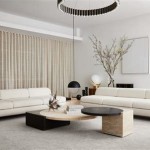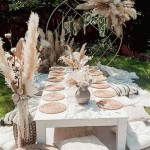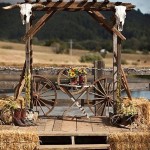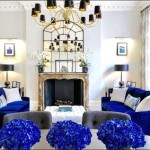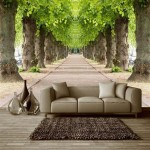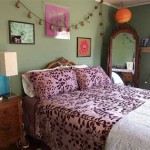How To Decorate a Retro Living Room
Retro interior design offers a captivating blend of nostalgia and style. Recreating a specific era, such as the mid-century modern period or the vibrant 1970s, requires careful selection of furniture, color palettes, and decorative accessories. This guide provides a step-by-step approach to achieving an authentic retro aesthetic in the living room.
Choosing an Era: The first step involves selecting a specific decade or design movement to emulate. Popular choices include the Mid-Century Modern (1945-1969), characterized by clean lines and organic shapes; the 1970s, known for bold colors and geometric patterns; and the Art Deco period (1920s-1930s) with its glamorous metallic accents and geometric motifs. Researching the chosen era thoroughly will inform subsequent design choices.
Furniture Selection: Furniture serves as the foundation of any living room. For a mid-century modern look, consider iconic pieces like Eames chairs, Noguchi coffee tables, or teak sideboards. Reproductions are readily available, offering a cost-effective alternative to original vintage furniture. A 1970s aesthetic might include modular sofas in bright colors, beanbag chairs, or chrome and glass coffee tables. Art Deco rooms benefit from velvet upholstered furniture, mirrored surfaces, and lacquered finishes.
Color Palettes: The color palette significantly contributes to a room's retro ambiance. Mid-century modern designs often feature warm, earthy tones like avocado green, burnt orange, mustard yellow, and browns, combined with neutrals like beige and white. The 1970s saw the rise of vibrant hues like orange, green, yellow, and brown, often paired with contrasting colors. Art Deco interiors lean towards sophisticated combinations of black, white, gold, silver, and jewel tones like emerald green and sapphire blue.
Wall Treatments: Wallpaper can effectively enhance the retro vibe. Geometric patterns, bold floral prints, or textured wallpapers in era-appropriate colors can instantly transform the room. Alternatively, paint can create a similar effect. Consider using a bold accent wall or painting the entire room in a signature color of the chosen era. Wood paneling, popular in the 1970s, can also contribute to an authentic retro feel.
Textiles and Patterns: Textiles play a crucial role in establishing a retro aesthetic. Incorporate cushions, throws, and curtains in period-specific fabrics like velvet, corduroy, or patterned textiles with geometric or floral motifs. Macrame wall hangings or crocheted blankets can introduce a touch of 1970s charm. For an Art Deco feel, opt for luxurious fabrics like silk and velvet with geometric or abstract designs.
Lighting: Lighting fixtures contribute significantly to the overall retro ambiance. Mid-century modern lighting often features sculptural forms and the use of materials like brass, teak, and glass. Arc floor lamps, pendant lights with geometric shapes, and starburst chandeliers are popular choices. 1970s lighting includes mushroom lamps, lava lamps, and track lighting. Art Deco lighting features geometric patterns, frosted glass, and chrome finishes.
Accessories and Decorative Elements: Carefully chosen accessories complete the retro look. Vintage record players, radios, or telephones can serve as both functional and decorative elements. Wall art featuring iconic imagery from the chosen era, such as abstract paintings or pop art prints, adds to the authenticity. Decorative objects like ceramic vases, sculptures, and vintage clocks further enhance the retro atmosphere. Consider incorporating houseplants, especially varieties popular during the chosen period.
Flooring: Flooring choices can contribute significantly to the overall retro aesthetic. Wood flooring, especially parquet or herringbone patterns, suits both mid-century modern and Art Deco styles. Linoleum flooring, available in a variety of colors and patterns, was popular in the mid-20th century and can add a unique retro touch. Shag carpeting, a staple of the 1970s, can create a bold and textured flooring option.
Maintaining Authenticity: While embracing retro style, strive for a cohesive and balanced look. Avoid overcrowding the space with too many elements from different eras. Focusing on a specific period or design movement helps maintain authenticity and prevents a cluttered, disjointed appearance. Balance the use of bold colors and patterns with neutral elements to create a visually appealing and harmonious space.
Resourcefulness and Repurposing: Sourcing vintage items from flea markets, antique shops, or online marketplaces can be a rewarding and cost-effective way to furnish and decorate a retro living room. Repurposing existing furniture or decorative objects with DIY projects can also contribute to a unique and personalized retro aesthetic. Updating existing furniture with new upholstery or paint in period-appropriate colors can transform a contemporary piece into a retro statement.
Personalization: Ultimately, a retro living room should reflect personal style and preferences. While adhering to the design principles of a chosen era, incorporate personal touches and elements that create a unique and inviting space. Mixing and matching vintage finds with contemporary pieces can result in a personalized retro aesthetic that feels both authentic and current.

Retro Living Room Ideas And Decor Inspirations For The Modern Home Decoist

Retro Living Room Ideas And Decor Inspirations For The Modern Home Decoist

18 Magnificent Ideas For Decorating Retro Living Room

Vintage Living Room Design Ideas For Your Home Designcafe

18 Magnificent Ideas For Decorating Retro Living Room

Modern Retro Living Room Ideas Furniture Designs Decorating House Garden

Vintage Meets Modern Living Room Decorating Ideas

Modern Retro Style Living Room Ideas Decor Inspirations

Vintage Living Room Design Ideas Home Bunch Interior

20 Retro Home Decor Ideas Tips For Style With Latest S
